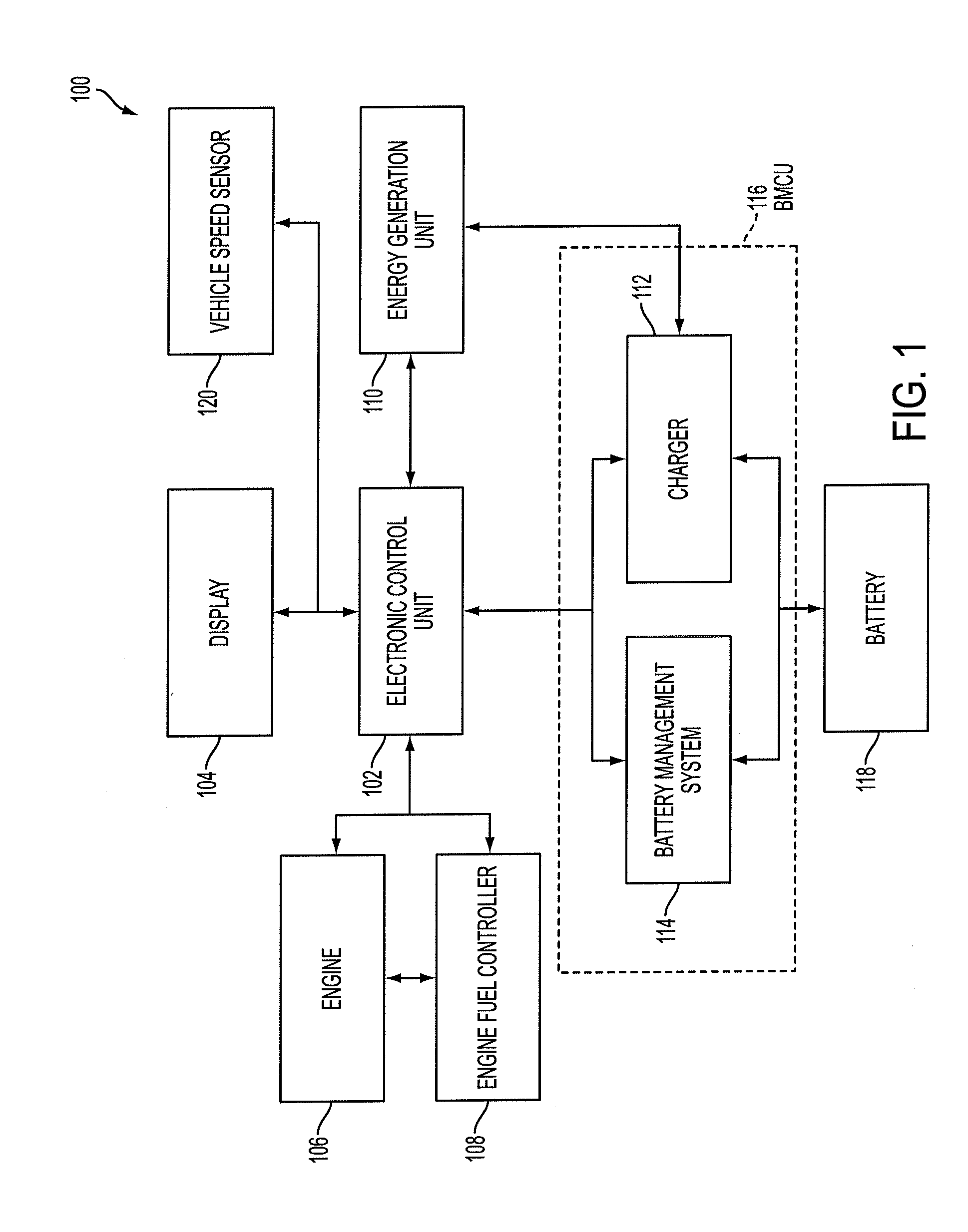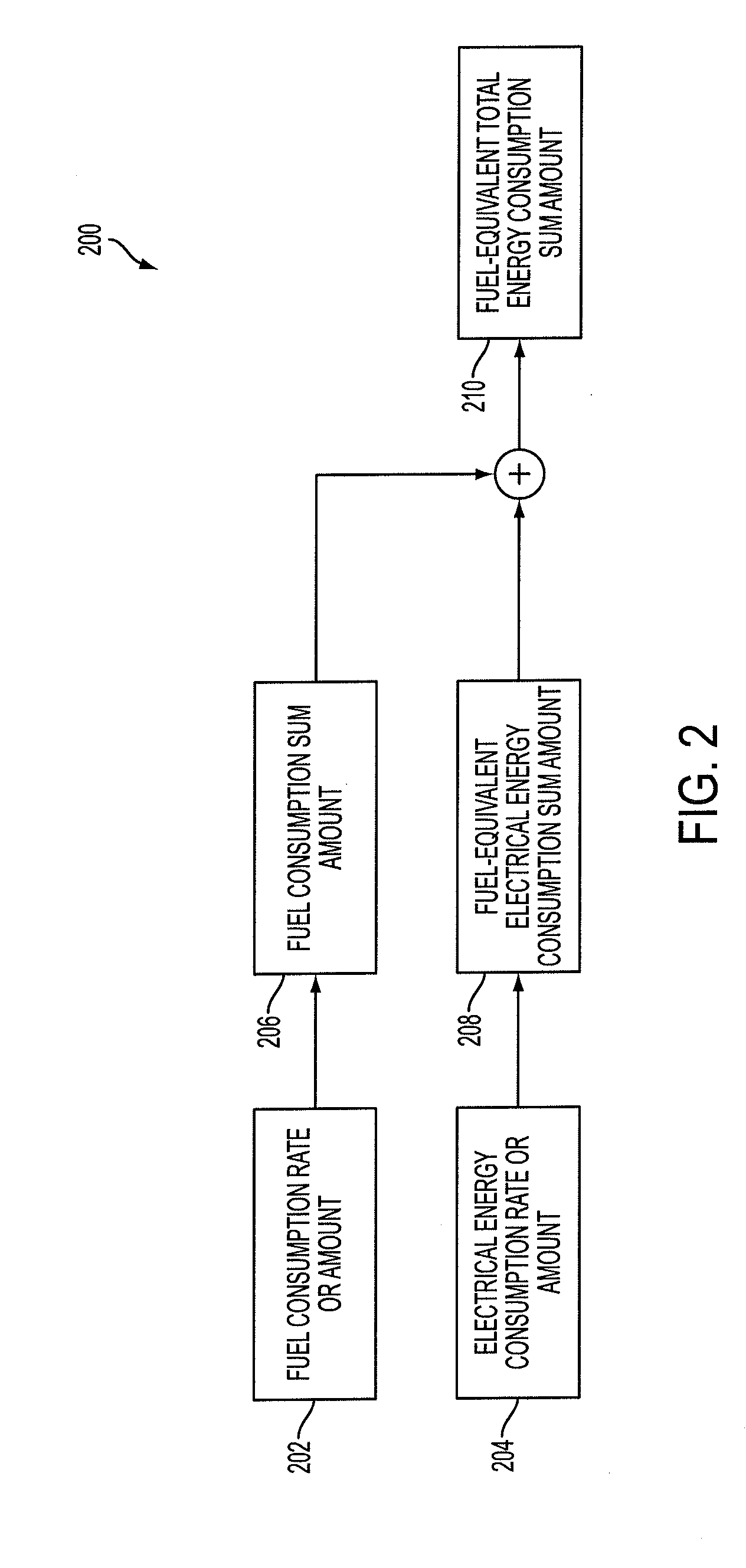System and method for determining and displaying a fuel-equivalent distance-per-energy consumption rate
a technology of energy consumption and energy-equivalent distance, which is applied in the direction of electrical control, process and machine control, instruments, etc., can solve the problems of inability of vehicle users to accurately assess the distance they can travel per vehicle, and the average vehicle user without engineering expertise may not find the energy efficiency information tangible and easy to understand
- Summary
- Abstract
- Description
- Claims
- Application Information
AI Technical Summary
Benefits of technology
Problems solved by technology
Method used
Image
Examples
Embodiment Construction
[0019]Referring to FIG. 1, a block diagram is shown of a vehicle 100 according to an embodiment of the present invention. The vehicle 100 may include an electronic control unit 102, a display 104, an engine 106, an engine fuel controller 108, an energy generation unit 110, a charger 112, a battery management and control unit (hereinafter referred to as BMCU) 116, a battery 118 and a vehicle speed sensor 120. The BMCU 116 may include a battery management system (BMS) 114 and a charger 112. The charger 112 may be configured to be coupled to an external charger. The vehicle 100 may also include a motor / generator and an HVAC (Heating, Ventilation and Air Conditioning) unit.
[0020]The vehicle 100 operates by utilizing a fuel source and a non-fuel source of energy. The vehicle 100 may be an alternative fuel vehicle, a hybrid electric vehicle, a plug-in hybrid electric vehicle, an electric vehicle or a solar powered vehicle or any other vehicle utilizing a non-fuel source of energy without ...
PUM
 Login to View More
Login to View More Abstract
Description
Claims
Application Information
 Login to View More
Login to View More - R&D
- Intellectual Property
- Life Sciences
- Materials
- Tech Scout
- Unparalleled Data Quality
- Higher Quality Content
- 60% Fewer Hallucinations
Browse by: Latest US Patents, China's latest patents, Technical Efficacy Thesaurus, Application Domain, Technology Topic, Popular Technical Reports.
© 2025 PatSnap. All rights reserved.Legal|Privacy policy|Modern Slavery Act Transparency Statement|Sitemap|About US| Contact US: help@patsnap.com



